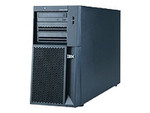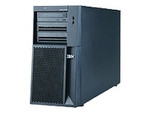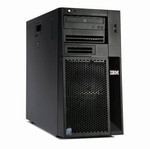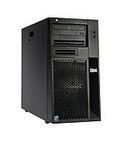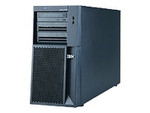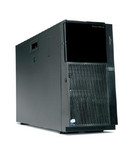Katalog
-
Katalog
- Antiquitäten & Kunst
- Auto & Motorrad: Fahrzeuge
- Business & Industrie
- Bücher
- Büro
- Camping & Outdoor
- Computer & Elektronik
- Essen, Getränke & Tabak
- Fashion & Style
- Feinschmecker
- Foto & Camcorder
- Garten & Terrasse
- Gesundheit & Beauty
- Haus, Bau, Renovierung
- Haushaltsgeräte
- Haustierbedarf
- Heimwerken & Garten
- HiFi & Audio
- Kinder
- Kleidung & Accessoires
- Kraftfahrzeuge & Zubehör
- Medizinische Geräte, Zubehör & Versorgungsmaterialien
- Modellbau
- Musik
- PC- & Videospiele
- Sammeln & Seltenes
- Spielzeug
- Sport & Erholung
- TV, Video, DVD
- Telekommunikation
- Uhren & Schmuck
- Unterhaltung & Hobby
- Waffen & Munition
- Wellness & Beauty
- institutional food services equipment
Filters
Search
Fujitsu PRIMERGY TX150 S7 2.4GHz X3430 350W Tower (5U) Server
MPN: VFY:T1507SF010FR
🚚 Liefern nach:
Lieferung aus:
Deutschland
Verkauf und Lieferung durch:
Wo kaufen und Preise (Werbung *)
nach Oben
Technische Daten
nach Oben
Prozessor Besonderheiten
| Intel® Enhanced Halt State | Y |
|---|---|
| Intel® Hyper-Threading-Technik (Intel® HT Technology) | N |
| Intel® Anti-Theft Technologie (Intel® AT) | N |
| Intel® Virtualisierungstechnik für direkte I/O (VT-d) | Y |
| CPU Konfiguration (max) | 1 |
| Intel® Dual Display Capable Technology | N |
| Intel® Clear Video Technologie | N |
| Intel® Virtualization Technologie (VT-X) | Y |
| Intel® Trusted-Execution-Technik | Y |
| Intel® Flex Memory Access | N |
| Intel® Fast Memory Access | N |
| Intel® Rapid-Storage-Technik | N |
| Intel® Turbo-Boost-Technologie | Y |
| Intel® 64 | Y |
| Intel® Insider™ | N |
| Intel® Quick-Sync-Video-Technik | N |
| ARK Prozessorerkennung | 42927 |
| Intel® Clear Video HD Technology für (Intel® CVT HD) | N |
| Intel® Wireless-Display (Intel® WiDi) | N |
| Intel® Demand Based Switching | Y |
| Verbesserte Intel SpeedStep Technologie | Y |
| Intel® FDI-Technik | N |
| Intel® VT-x mit Extended Page Tables (EPT) | Y |
| Intel® vPro™ -Technik | N |
| Intel® Clear Video Technology für Mobile Internet Devices (Intel® CVT for MID) | N |
| Intel® My-WiFi-Technik (Intel® MWT) | N |
Prozessor
| Prozessorbetriebsmodi | 64-bit |
|---|---|
| Eingebettete Optionen verfügbar | Y |
| FSB Gleichwertigkeit | N |
| Anzahl der Processing Die Transistoren | 774 M |
| Physical Address Extension (PAE) | 36 bit |
| Maximale Anzahl der PCI-Express-Lanes | 1 |
| Thermal-Überwachungstechnologien | N |
| Leerlauf Zustände | Y |
| Execute Disable Bit | Y |
| Prozessor Boost-Taktung | 2.8 GHz |
| Prozessor-Cache | 8 MB |
| Anzahl installierter Prozessoren | 1 |
| Anzahl Prozessorkerne | 4 |
| Max. number of SMP processors | 1 |
| Thermal Design Power (TDP) | 95 W |
| CPU-Multiplikator (Bus-/Kernverhältnis) | 18 |
| Prozessor Lithografie | 45 nm |
| Prozessor-Paketgröße | 37.5 mm |
| PCI Express Konfigurationen | 4x4, 2x8, 1x16 |
| Konfliktloser-Prozessor | N |
| Speicherkanäle, vom Prozessor unterstützt | Dual |
| Durch den Prozessor (max) unterstützte Speicherbandbreite | 21 GB/s |
| Speichertaktraten, vom Prozessor unterstützt | 1333, 1066, 800 MHz |
| Prozessor Cache Typ | Smart Cache |
| Prozessor-Code | SLBLJ |
| Bus typ | DMI |
| Speichertypen, vom Prozessor unterstützt | DDR3-SDRAM |
| Unterstützte Befehlssätze | SSE4.2 |
| ECC vom Prozessor unterstützt | Y |
| Tcase | 72.7 °C |
| Maximaler interner Speicher, vom Prozessor unterstützt | 32 GB |
| Prozessor-Taktfrequenz | 2.4 GHz |
| Stepping | B1 |
Speicher
| Interner Speichertyp | DDR3-SDRAM |
|---|---|
| ECC | Y |
| RAM-Speicher | 4 GB |
| RAM-Speicher maximal | 32 GB |
| Speichersteckplätze | 6 |
Speichermedien
| Hot-Swap | Y |
|---|---|
| Maximale Anzahl Laufwerke pro Gehäuse | 4 |
Erweiterungssteckplätze
| PCI-Express x4-Slots | 1 |
|---|---|
| PCI-Express x8-Slots | 2 |
| PCI-Express x1-Slots | 2 |
| PCI-Slots | 1 |
| PCI-Express-Slots-Version | 2.0 |
Design
| Gehäusetyp | Tower (5U) |
|---|---|
| Optisches Laufwerk - Typ | DVD Super Multi |
Anschlüsse und Schnittstellen
| Serielle Anschlüsse | 1 |
|---|---|
| Anzahl VGA (D-Sub) Anschlüsse | 1 |
Energie
| Stromversorgung | 350 W |
|---|
Netzwerk
| Netzwerkfunktionen | Gigabit Ethernet |
|---|
Weitere Spezifikationen
| Festplatte | 4x 3.5" SAS/SATA, 8x 2.5" SAS/SATA/SSD |
|---|
Zusätzlich
| Processing die Größe | 296 mm² |
|---|---|
| Motherboard Chipsatz | Intel 3420 |
| Anzahl Ethernet-LAN-Anschlüsse (RJ-45) | 2 |
| InTru™-3D-Technik | N |
| Intel® AES New Instructions (Intel® AES-NI) | N |
| System-Bus | 2.5 GT/s |
Fujitsu PRIMERGY TX150 S7, PRIMERGY. Prozessor-Taktfrequenz: 2,4 GHz, Prozessorfamilie: Intel® Xeon® 3000er-Prozessoren, Prozessor: X3430. RAM-Speicher: 4 GB, Interner Speichertyp: DDR3-SDRAM, RAM-Speicher maximal: 32 GB. Netzwerkfunktionen: Gigabit Ethernet. Kompatible Betriebssysteme: Microsoft Windows Server 2008 R2 Microsoft Windows Server 2008 Novell SUSE Linux Enterprise Server R. Gehäusetyp: Tower (5U), Optisches Laufwerk - Typ: DVD Super Multi
Ähnliche Angebote
nach Oben
-
Zahlungsarten
Wir akzeptieren:

















